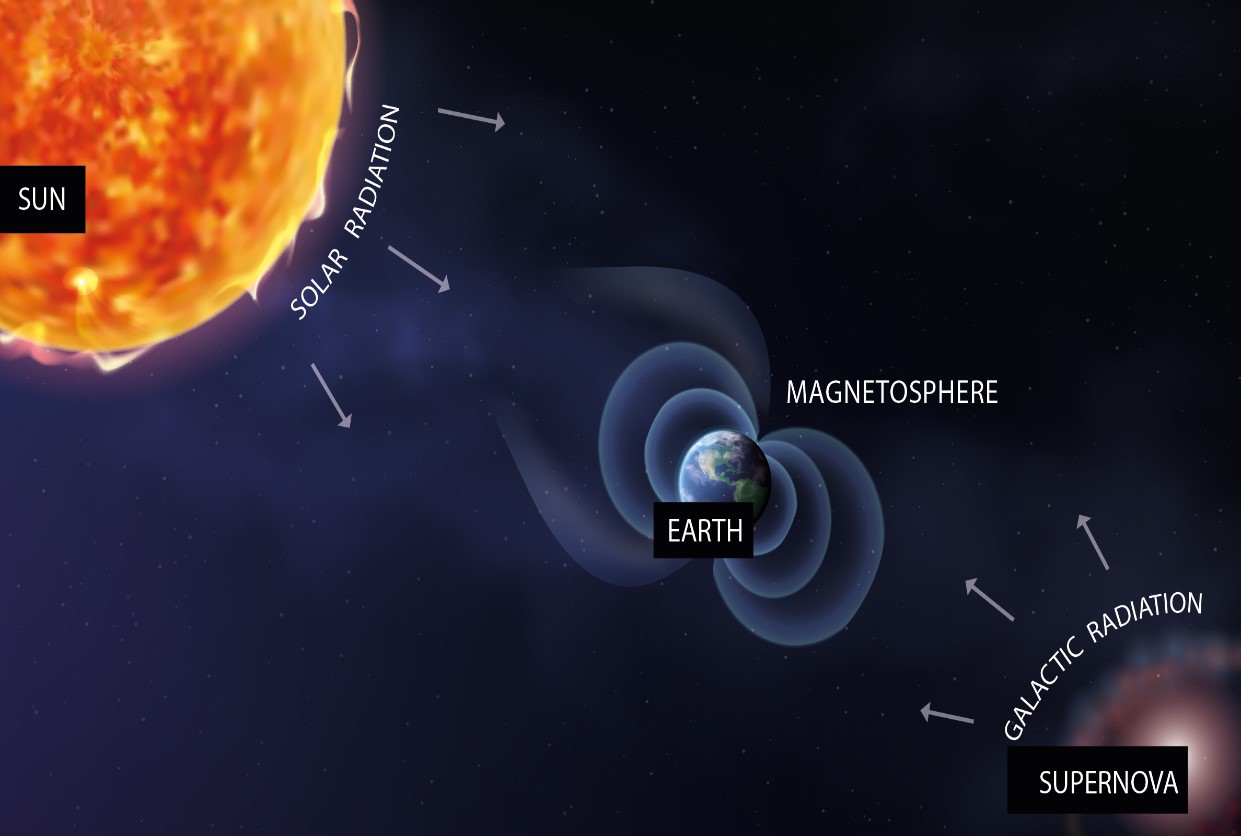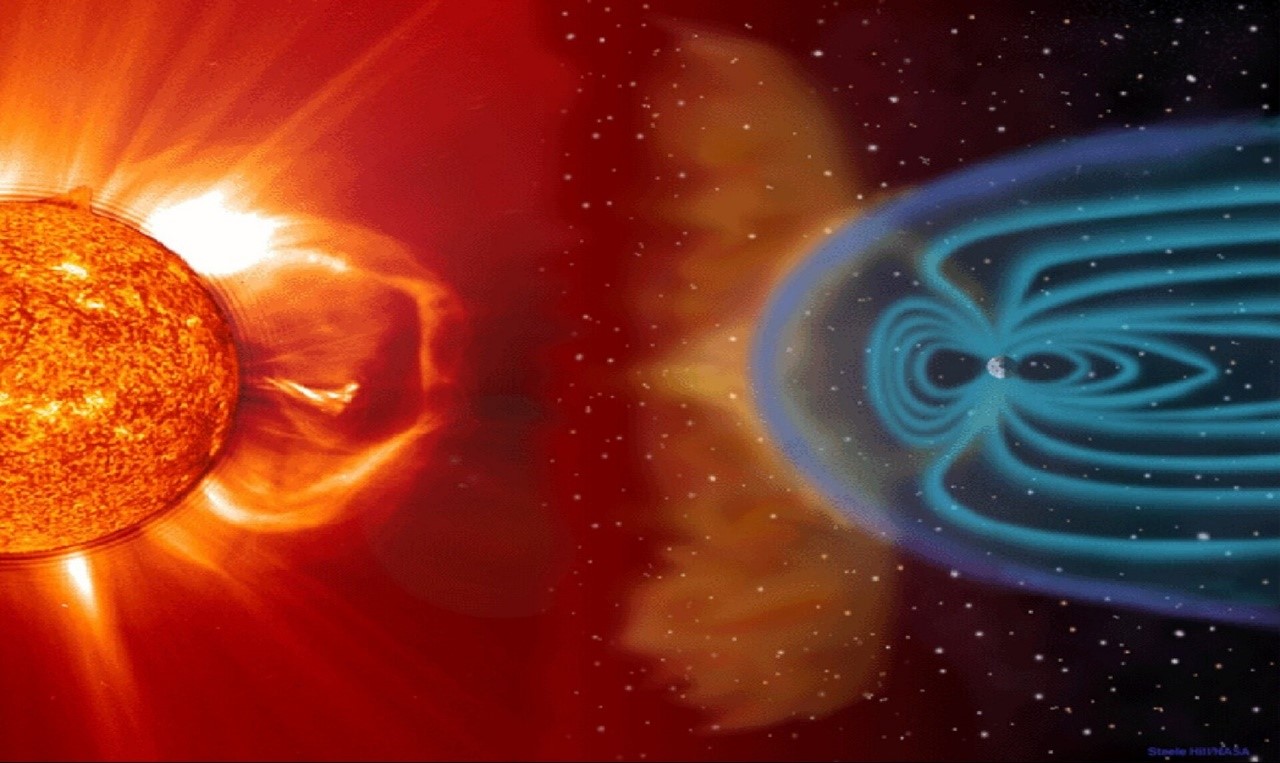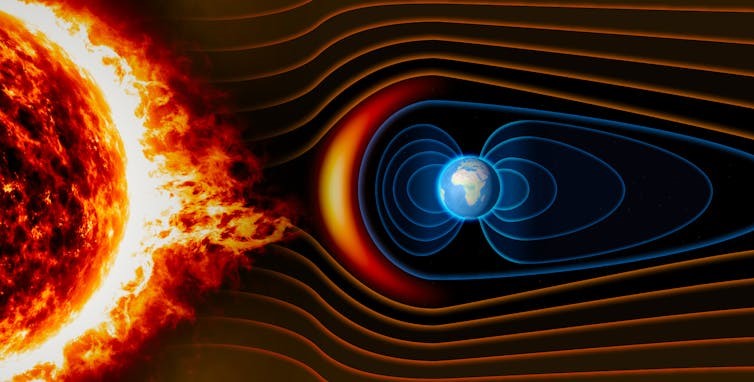Introduction to Space Radiation and Its Challenges
Space radiation presents significant challenges for both human spaceflight and spacecraft systems. Unlike on Earth, where the atmosphere and magnetic field provide substantial protection, space environments expose astronauts and technology to intense and varied radiation types. Understanding these radiation types and their impacts is crucial for developing effective protective measures.
Key Points:
Types of Space Radiation
- Galactic Cosmic Rays (GCRs):
- Origin: GCRs are high-energy particles originating outside our solar system, likely from supernovae and other cosmic events
- Composition: They consist mainly of protons (about 85%), alpha particles (about 14%), and heavier nuclei (about 1%).
- Characteristics: GCRs are highly penetrative and can traverse the human body and spacecraft materials, posing significant health risks and potential damage to electronics.
- Solar Particle Events (SPEs):
- Origin: Figure 1 shows Space Radiation. SPEs occur during periods of heightened solar activity, such as solar flares and coronal mass ejections (CMEs).
- Composition: SPEs are primarily composed of protons, with smaller amounts of heavier ions and electrons.
- Characteristics: SPEs can deliver high doses of radiation over short periods, posing acute radiation risks to astronauts and temporary disruptions to spacecraft systems.
- Trapped Radiation Belts:
- Origin: The Van Allen belts are zones of charged particles trapped by Earth's magnetic field.
- Composition: These belts contain high-energy protons and electrons.
- Characteristics: The inner belt poses more significant radiation exposure, especially during periods of geomagnetic disturbances. Spacecraft passing through these belts can experience increased radiation levels.

Figure 1. Space Radiation
Health Risks
- Acute Radiation Sickness: High doses of radiation over short periods can cause symptoms like nausea, vomiting, fatigue, and skin burns.
- Long-term Effects: Prolonged exposure to lower doses of radiation increases the risk of cancer, cataracts, cardiovascular disease, and potential damage to the central nervous system.
- Impact on DNA: Radiation can cause mutations and damage to DNA, leading to potential long-term genetic effects.
Technological Risks
- Electronics Malfunction: Radiation can cause single-event upsets (SEUs), leading to temporary or permanent malfunctions in spacecraft electronics.
- Material Degradation: Prolonged exposure to radiation can degrade spacecraft materials, reducing their structural integrity and functionality over time.
- Sensor Interference: Radiation can interfere with the operation of sensors and other critical systems, affecting the accuracy of data collection and system performance.
Current Monitoring Methods
- Passive Detectors: These include dosimeters that measure cumulative radiation exposure over time. While useful, they do not provide real-time data.
- Active Detectors: Instruments such as Geiger-Müller tubes and silicon detectors provide real-time radiation measurements but can be limited by their sensitivity and range.
- Satellite Monitoring: Spacecraft equipped with radiation monitoring instruments provide valuable data but can be limited by their orbital paths and the delay in data transmission.
- Periodic Updates: Space agencies provide regular updates on space weather and radiation levels, but the information may not be timely enough for immediate response to sudden events like SPEs.
Understanding space radiation and its challenges is essential for ensuring the safety and success of human space missions and the longevity of spacecraft. [1] The diverse and dynamic nature of space radiation requires robust monitoring and protective strategies. As we progress in space exploration, developing advanced methods to monitor and mitigate radiation risks will be crucial for future missions to the Moon, Mars, and beyond.
References:
- https://www.nasa.gov/missions/analog-field-testing/why-space-radiation-matters/
Cite this article:
Janani R (2024), AI For Space Radiation Monitoring, AnaTechmaz,pp.1





